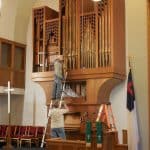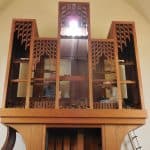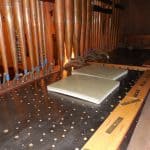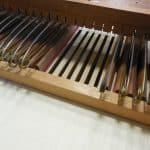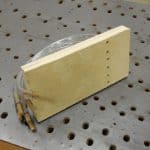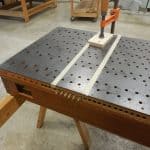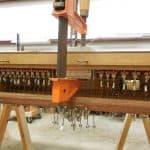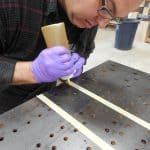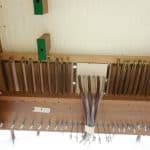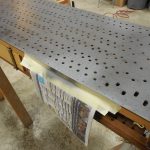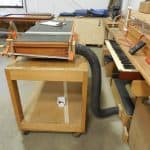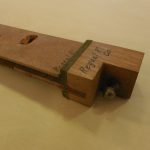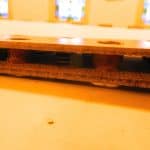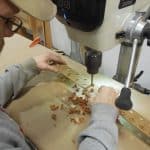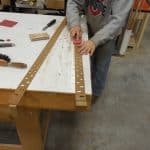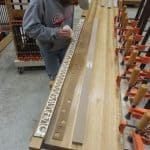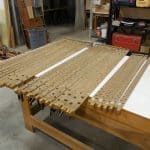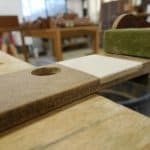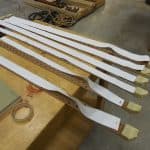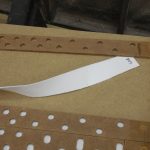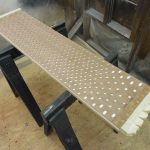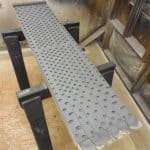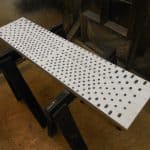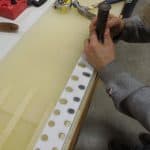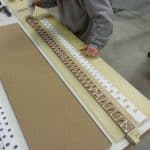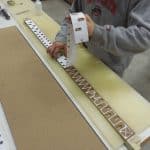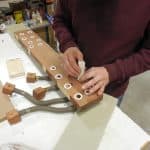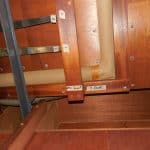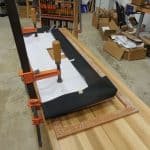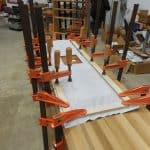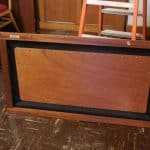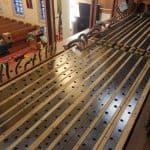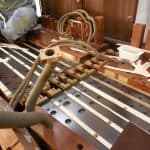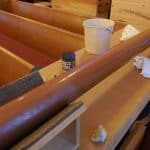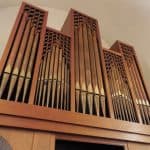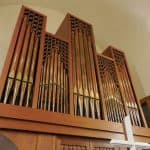I received a phone call from Troy Fowler, President of the Board of Trustees at Center Presbyterian Church in Slippery Rock, Pennsylvania, in May 2016 asking if I would be interested in looking at their 1969 Flentrop. The firm responsible for the care of the organ since its installation had given the church a proposal for mechanical work, and they wanted a second opinion.
I visited the church early in June and found an instrument in very good condition. Various minor repairs had been undertaken through the years, all of which had been well executed. The church had recently been told that five items needed to be addressed: one or more runs in the fifth octave of the Borstwerk chest, the schwimmer of the same chest, the double sliders on the chests, the schwimmers of the Hoofdwerk/Pedaal chests, and all pallets. I ended up telling the church in my report that yes, these were all definite items of concern in the future, but none of the work was imperative at the present time. Troy responded that the church was inclined to address the items before they became actual problems — I told him that, as an organbuilder, it was refreshing to find a church being proactive about its organ! The church chose us in August 2016 to perform the work, which commenced in January 2017.
We removed all pipes from the organ and stored them at the church. We then removed the Borstwerk chest, with its schwimmer, as well as both schwimmer frames from the bottoms of the Hoofdwerk/Pedaal chests and all toeboards and sliders; these items were brought back to the shop. All wooden parts were cleaned. The runs in the Borstwerk chest encompassed the notes as47-ds52, and so we removed those pallets and made a leathered board to cover the slots; plastic hoses allowed for draining the channels after they had been flooded with shellac. All 6 channels then tested perfectly. New rubber cloth was fit to all 3 schwimmer frames, and new leather gasketing was installed as well. I had pointed out in my report that the felt&leather on the pallets was still in very good condition, and the church agreed that there was no reason to recover them at this point.
A primary concern of the church had been the “sandwich” sliders, consisting of 2 layers of 1/8” Masonite spaced apart with captive springs and hundreds of short leather tubes connecting the slider holes in each layer. Once the leather begins to fail, the resulting wind leaks cause out-of-tuneness in the pipes, and eventually the organ becomes unusable. The report stated that there was no evidence of this beginning to happen yet, but the church decided to undertake the work sooner rather than later. We removed all leather and springs and glued the layers together to form sliders about 1/4″ thick. We then installed slider seals of Liegelind cloth, which we’ve used in our new chests with great success — and we’ll never have to worry about plastic foam disintegrating in the future. Because of the graphite-impregnated chest tables in this organ, we punched holes into a solid layer of cloth and glued this to the bottom of each slider, rather than gluing cloth rings to the table itself; the toeboard bottoms received cloth rings like usual. All slider tops were then graphited well. The old bolsters worked perfectly with a bit of shimming.
We installed mufflers for the channel bleeds, as playing most notes with no stops on had resulted in a hissing sound plainly evident at the keydesk and in much of the chancel. The church, at our suggestion, also replaced the single large incandescent bulb inside the organ with several LED strips, which not only illuminate the main chests much better, but also won’t warm up the pipes or air while tuning. During the first phase of on-site work, I had discussed with Troy the possibility of rejuvenating the flamed copper façade; we experimented with several treatments, wanting to take as minimalist an approach as possible. In the end, the church agreed with our recommendation to use a mild cleaner/polish on them, as all of us simply wanted to brighten up what was there, and not materially change their appearance. We feel the organ now looks as it did when first installed, and will continue to serve this church well for decades to come.
Flentrop Orgelbouw, Zaandam, Holland — 1969
HOOFDWERK (Manual I, C1-g56)
Prestant 8’
Roerfluit 8’
Octaaf 4’
Fluit 4’
Octaaf 2’
Mixtuur IV (11⁄3’)
Trompet 8’
BORSTWERK (Manual II, C1-g56, enclosed with hinged doors)
Gedekt 8’
Koppelfluit 4’
Prestant 2’
Larigot 11⁄3’
Sesquialtera II (2⁄3’)
Regaal 8’
PEDAAL (C1-g32, AGO)
Subbas 16’
Prestant 8’ (part. HW)
Gedekt 8’
Octaaf 4’
Fluit 2’
Hoofdwerk to Pedaal
Borstwerk to Pedaal
Borstwerk to Hoofdwerk
